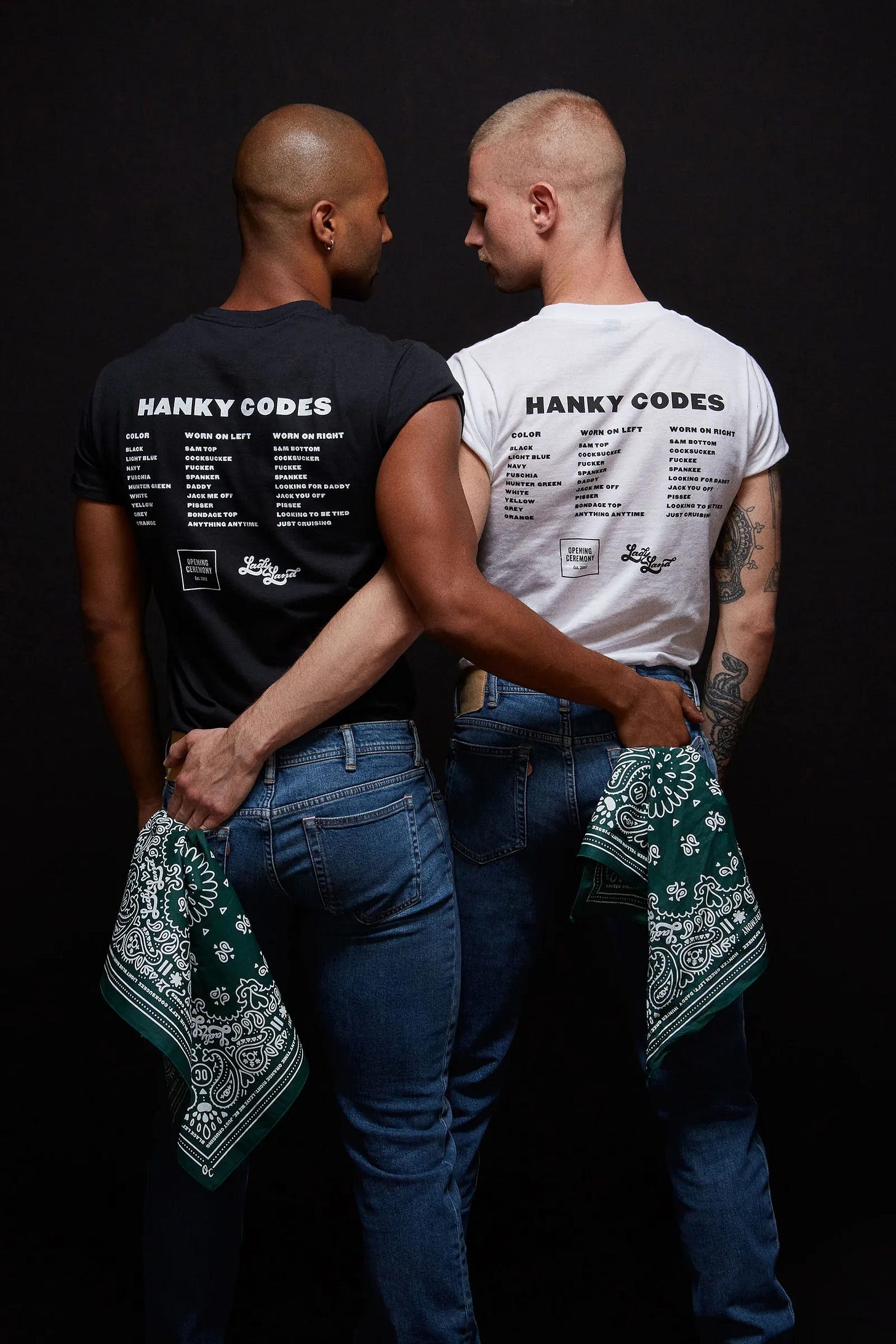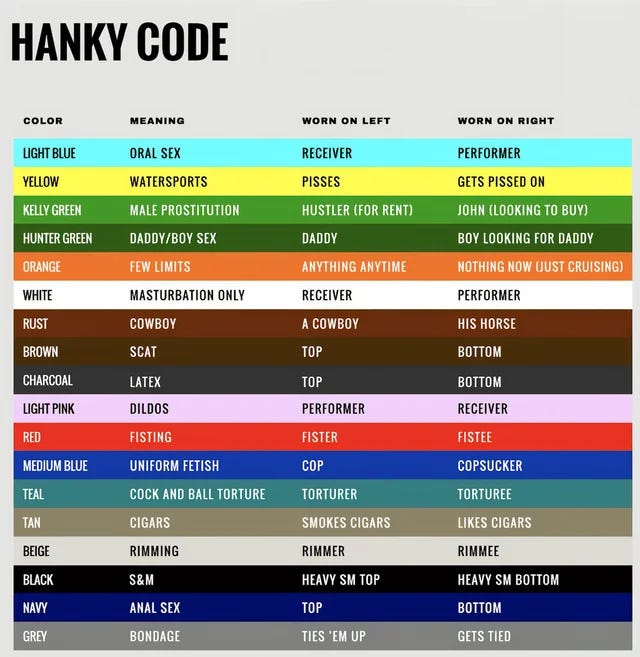The Hanky Code, Explained
Hunter Green rules this file, but what is the Hanky Code and where did it come from?
First things first. What exactly is the Hanky Code? The Pack blog describes it this way:
What is the Hanky Code?
The hanky code, also known as the handkerchief code or flagging, is a system of communication that uses colored handkerchiefs to signal sexual interests and preferences discreetly. Originating in the gay male subculture of the 1970s, this code allowed individuals to express their desires in an era when open discussion of sexuality, especially same-sex attraction, was often taboo or even dangerous.
Brief History & Origins:
The exact origins of the hanky code are somewhat murky, but most historians trace it back to San Francisco in the early 1970s. During this time, the city was experiencing a boom in its gay population, particularly in the Castro district. As the community grew, so did the need for subtle ways to communicate sexual interests in public spaces.
One popular theory suggests that the code evolved from the Gold Rush era practice of wearing bandanas to signal whether someone was looking for a dance partner. In the absence of women, men would wear red or blue bandanas to indicate whether they wanted to take the "female" or "male" role in a dance.
Another theory links the hanky code to the use of keys on belt loops, where the side on which keys were worn indicated whether someone was a "top" or a "bottom" in sexual encounters. The hanky code expanded on this idea, introducing a rainbow of colors to represent various preferences and practices.Purpose & Use in LGBTQ+ Communities:
The primary purpose of the hanky code was to facilitate connections between individuals with compatible sexual interests. In an era before dating apps and widespread acceptance of LGBTQ+ identities, this system provided a discreet yet effective way for people to find potential partners who shared their specific desires.
The code also served as a form of in-group signaling, helping members of the LGBTQ+ community recognize each other in public spaces. This was particularly important during times when being openly gay could result in discrimination, violence, or legal consequences. Nowadays, the hankies aren't utilized as such anymore, and mostly serve as a look instead of a communication tool to find likeminded people.
While this file is devoted to hunter green, there are countless colors represented in the Hanky Code:



